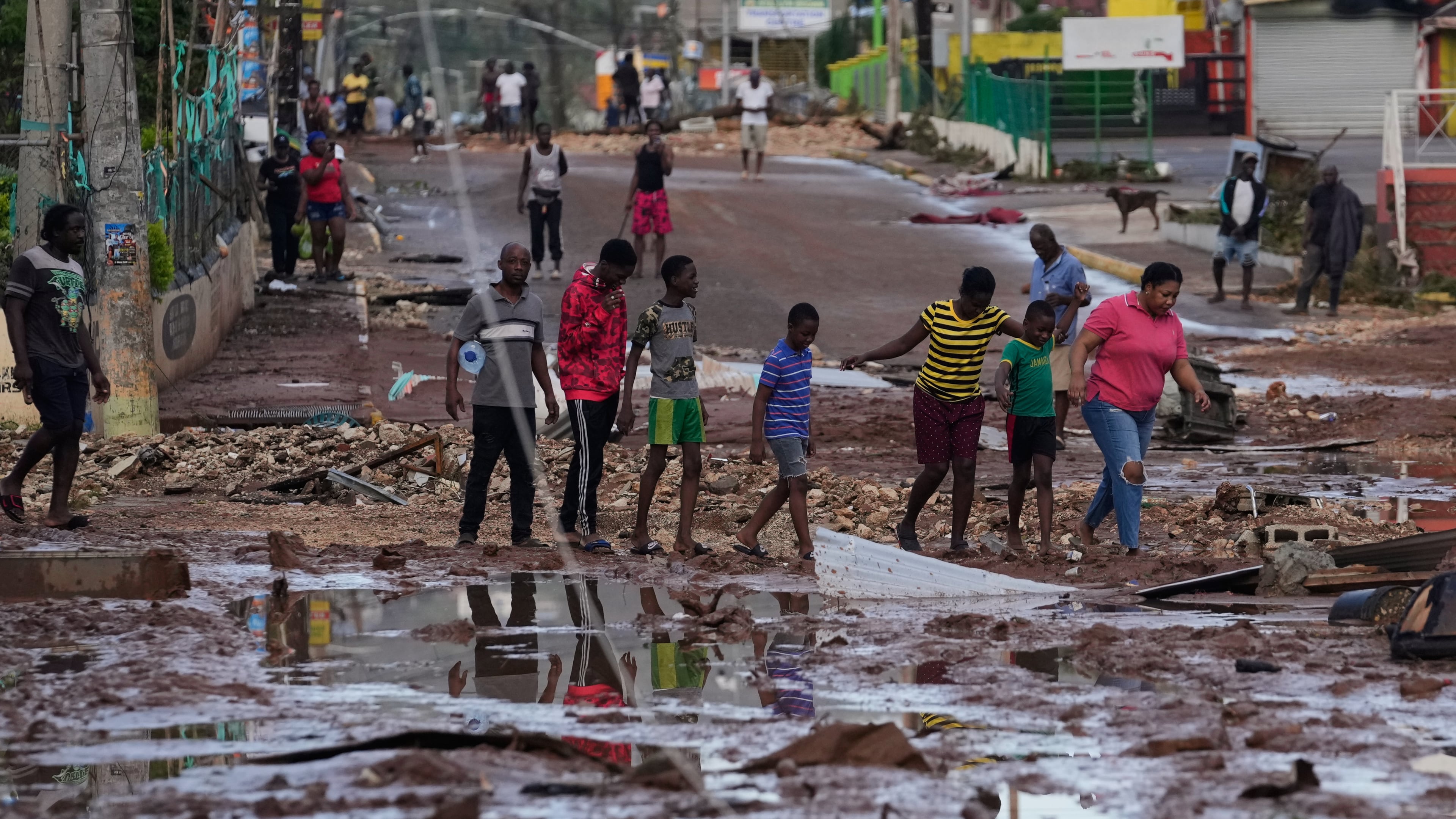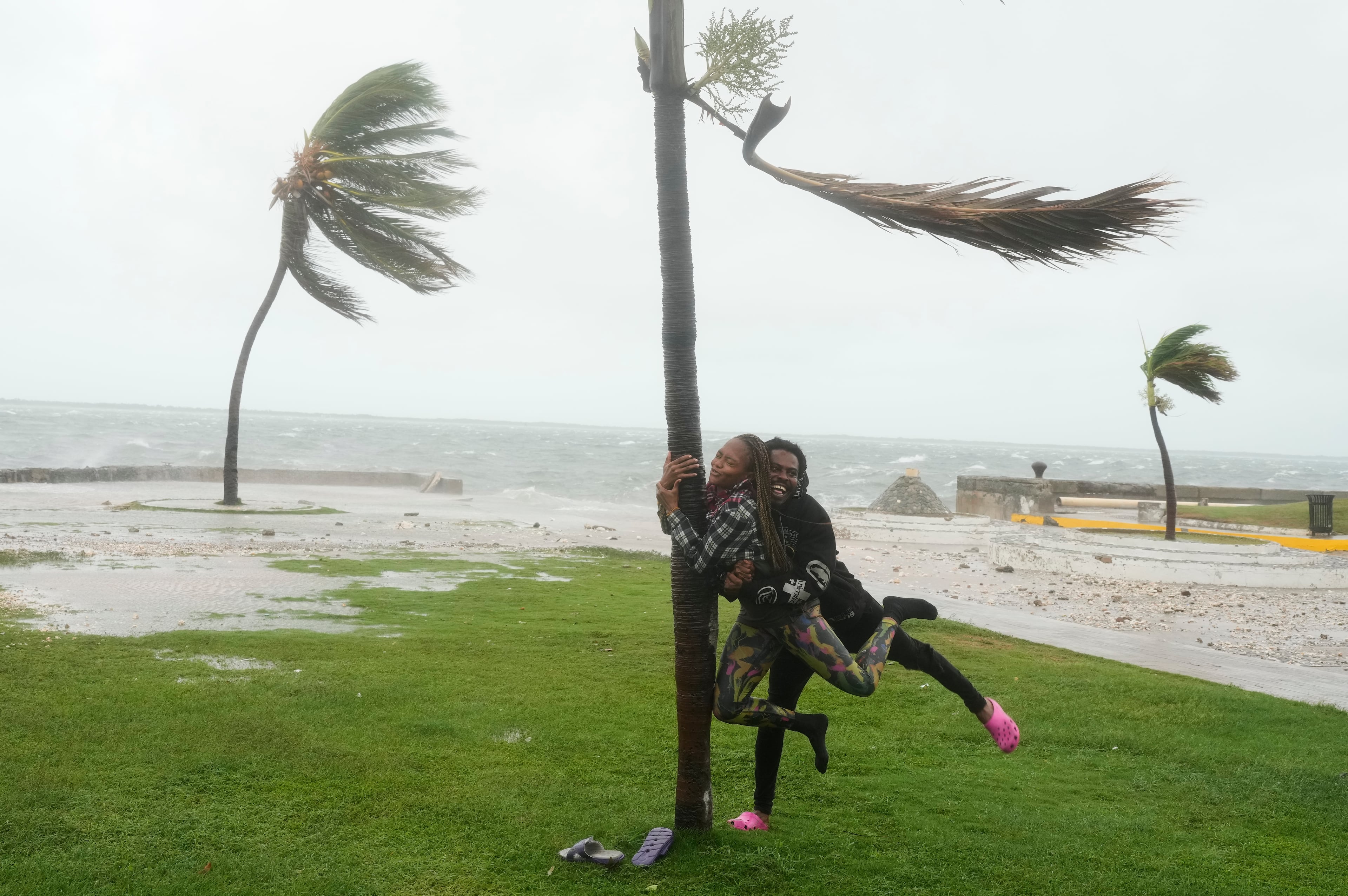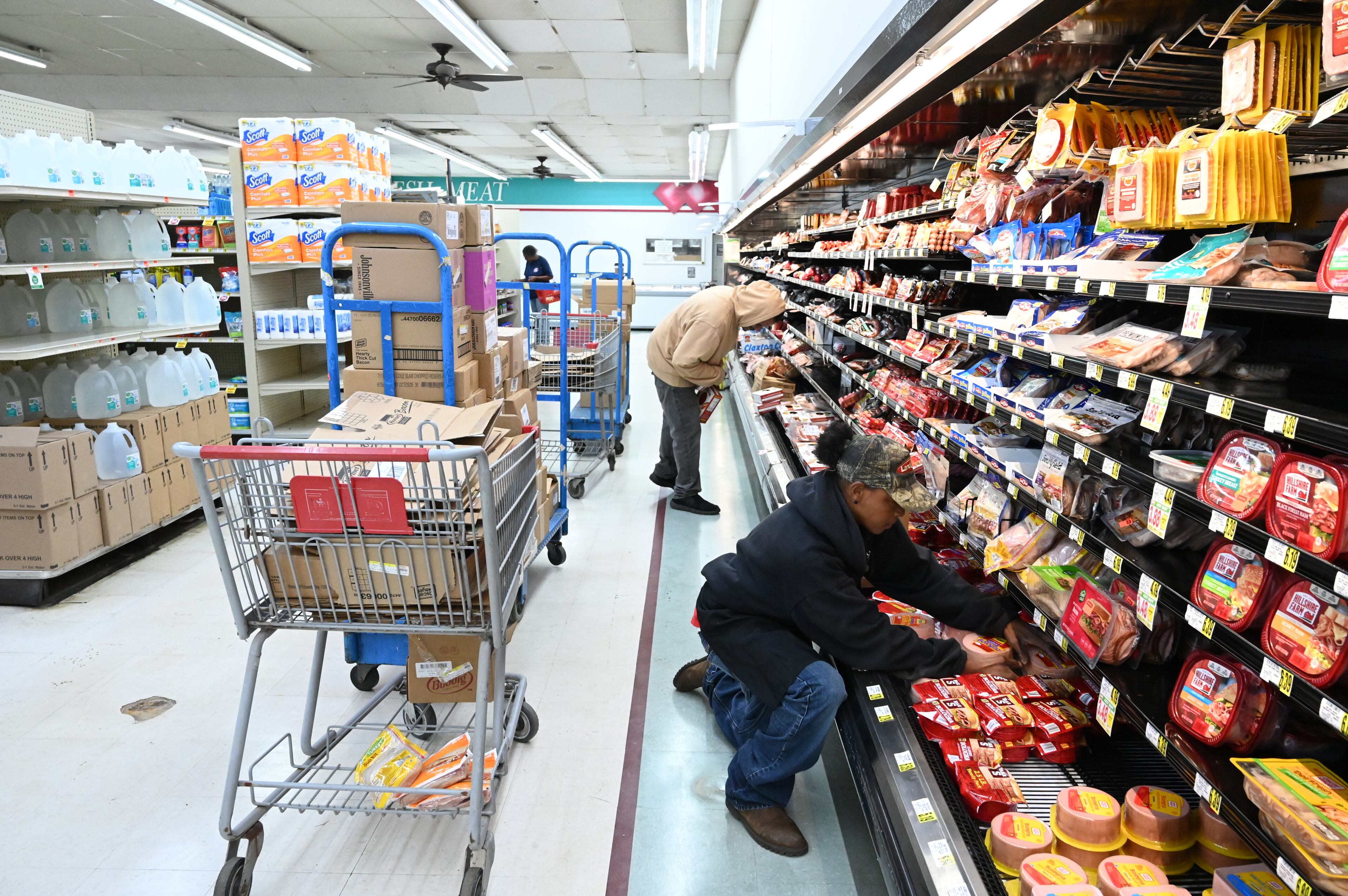Hurricane Melissa leaves 25 dead in Haiti, causes widespread damage in Jamaica and Cuba

SANTIAGO DE CUBA, Cuba (AP) — Hurricane Melissa left dozens dead and widespread destruction across Cuba, Jamaica and Haiti on Wednesday, knocking out power and forcing residents from their homes in inundated towns.
A landslide blocked the main roads of Santa Cruz in Jamaica's St. Elizabeth parish, where the streets were reduced to mud pits. Residents swept water from homes as they tried to salvage belongings. Winds ripped off part of the roof at a local high school, a designated public shelter.
“I never see anything like this before in all my years living here,” resident Jennifer Small said.
Melissa made landfall Tuesday in Jamaica as a catastrophic Category 5 storm with top winds of 185 mph (295 kph), one of the strongest Atlantic hurricanes on record, before moving on the Cuba, but even countries outside the direct path of the massive storm felt its devastating effects.
In Haiti, flooding from Melissa killed 25 people in the southern coastal town of Petit-Goâve, its mayor told The Associated Press. Mayor Jean Bertrand Subrème said La Digue river burst its banks and flooded nearby homes.
Dozens of homes collapsed and people were still trapped under rubble Wednesday morning, he said. Only one official from Haiti’s Civil Protection Agency was in the area, with residents struggling to evacuate amid heavy floodwaters.
Officials reported collapsed houses, blocked mountain roads and roofs blown off in Cuba on Wednesday, with the most destruction concentrated in the southwest and northwest. Authorities said about 735,000 people remained in shelters in eastern Cuba.
“That was hell. All night long, it was terrible,” said Reinaldo Charon in Santiago de Cuba. The 52-year-old was one of the few people venturing out Wednesday, covered by a plastic sheet in the intermittent rain.
In Jamaica, more than 25,000 people were packed into shelters Wednesday and more streamed in throughout the day after the storm ripped roofs off their homes and left them temporarily homeless. Dana Morris Dixon, Jamaica’s education minister, said that 77% of the island was without power Wednesday.
“It’s not going to be an easy road, Jamaica,” said Desmond McKenzie, deputy chairman of Jamaica’s Disaster Risk Management Council. “I know persons … are wondering what their future are going to be like.”
Cuba rides out the storm
In Cuba, parts of Granma province, especially the municipal capital, Jiguaní, were underwater, said Gov. Yanetsy Terry Gutiérrez. More than 15 inches (40 centimeters) of rain was reported in Jiguaní’s settlement of Charco Redondo.
Melissa had top sustained winds of 100 mph (155 kph), a Category 2 storm, and was moving northeast at 14 mph (22 kph) according to the U.S. National Hurricane Center in Miami. The hurricane was centered about 150 miles (245 kilometers) south of the central Bahamas.
Melissa was forecast to continue weakening as it crossed Cuba but remain strong as it moves across the southeastern or central Bahamas later Wednesday. It was expected to make its way late Thursday near or to the west of Bermuda. Haiti and the Turks and Caicos also braced for its effects.
The storm was expected to generate a surge of up to 12 feet (3.6 meters) in the region and drop up to 20 inches (51 centimeters) of rain in parts of eastern Cuba. Intense rain could cause life-threatening flooding with numerous landslides, U.S. forecasters said.
The hurricane could worsen Cuba's severe economic crisis, which already has led to prolonged power blackouts, as well as fuel and food shortages.
“There will be a lot of work to do. We know there will be a lot of damage,” Cuban President Miguel Díaz-Canel said in a televised address, and urged the population not to underestimate the power of Melissa, “the strongest ever to hit national territory.”
Jamaica rushes to assess the damage
Jamaican officials reported complications in assessing the damage because of outages, noting that “a total communication blackout” in areas, Richard Thompson, acting director general of Jamaica’s Office of Disaster Preparedness and Emergency Management, told the Nationwide News Network.
At least one death was reported in the Jamaica's west when a tree fell on a baby, state minister Abka Fitz-Henley told the Nationwide News Network.
Prime Minister Andrew Holness plans to fly over the most affected areas, where crews were still trying to access areas and determine the extent of the damage, Dixon said.
Extensive damage was reported in parts of Clarendon in the south and in the southwestern parish of St. Elizabeth, which was "underwater,” said Desmond McKenzie, deputy chairman of Jamaica’s Disaster Risk Management Council. He said the storm damaged four hospitals and left one without power, forcing officials to evacuate 75 patients.
The government said it hopes to reopen all of Jamaica’s airports as early as Thursday to ensure quick distribution of emergency relief supplies.
The U.S. government said it was deploying a disaster response team and search and rescue personnel to the region. And the State Department said non-emergency personnel and family members of U.S. government employees were authorized to leave Jamaica because of the storm's impact.
___
Rodríguez reported from Havana, Myers from Santa Cruz, Jamaica, and Sanon from Port-au-Prince, Haiti. Dánica Coto in San Juan, Puerto Rico, contributed.

